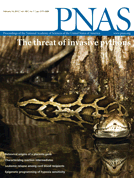
我们的心跳实际上是由上百万个肌肉细胞协调行动的结果。大多数时候,只有大的心室的肌肉细胞收缩和放松。但是当心脏需要加强工作时,它还要依靠小心房深处的心房肌细胞。
这些高性能的心房细胞的健康依赖于特定的细胞钙离子浓度。诺丁汉大学的研究人员首次建立了心脏心房细胞里钙离子活动的数学模型,这将有助于提高心脏疾病和中风的治疗机会。
这项突破带领科学家进入一个细胞活动的世界,打破了当前成像技术。研究结果发表在 Proceedings of the National Academy of Sciences杂志上。
Rüdiger Thul博士是数学科学院应用数学的讲师,他说:这项新模型首次为亚细胞钙离子信号的产生和发展提供临床相关的见解。我们首次对整个心房肌细胞进行细胞特性操控,以降低导致异常的可能性。该研究有望找出新的方法,治疗心脏疾病和心跳不规律如如会导致血栓和中风的心房颤动。
人类的心脏一生可跳动多达10亿次。心脏的主要功能是泵血。为了形成将血液运送到所有血管的动力,心脏进行跳动,心脏的每个细胞进行收缩。
大多数肌细胞都围绕在较大的心房和心室周围。休息的时候,心室主要负责心脏收缩。当需要迅速泵血时,比如运动的时候,小心房会协助收缩。这就是心房驱血。
当我们衰老或者是心脏出现问题时,比如房颤,心房肌细胞就开始损坏。结果就是失去心房驱血的支持。房颤是最常见的心律失常的形式,即心脏跳动不规律。
多项实验研究发现钙离子在细胞不同部位的浓度值不同以引发心房肌细胞收缩, 这点与心室细胞不同,整个心室细胞的钙离子浓度基本一致。
为了全面的了解心房钙离子动态,我们需要能够全面地观察心房细胞。不幸的是,当前最先进的实验技术都达不到。而且,细胞的实验操作通常影响多个细胞控制机制,这就导致对不同路径进行分别研究更加困难。所以,找到心房细胞行为的先锋模型对于我们的理解至关重要。
Thul博士说:“我们模型的优势在于我们可以同时观察心房肌细胞整个体积的钙离子浓度。这允许更加详细地探讨与健康和病理条件相关的时空钙模式。”
而且,我们可以选择性的激活,撤销,高表达或低表达细胞特性,并观察它们如何形成钙模式。因此,我们可以推断出哪种情况下会导致异常并可能导致疾病,如心房颤动等。重要的是,无论采用何种药物治疗,它只在单细胞水平发挥作用。器官的反应总是起因于其细胞成分的相互作用。未来心房颤动等心脏病症的治疗,心房细胞的全三维模型为新药物提供了一个理想的试验场。”

Subcellular calcium dynamics in a whole-cell model of an atrial myocyte
Rüdiger Thul, Stephen Coombes, H. Llewelyn Roderick, and Martin D. Bootman
In this study, we present an innovative mathematical modeling approach that allows detailed characterization of Ca2+ movement within the three-dimensional volume of an atrial myocyte. Essential aspects of the model are the geometrically realistic representation of Ca2+ release sites and physiological Ca2+ flux parameters, coupled with a computationally inexpensive framework. By translating nonlinear Ca2+ excitability into threshold dynamics, we avoid the computationally demanding time stepping of the partial differential equations that are often used to model Ca2+ transport. Our approach successfully reproduces key features of atrial myocyte Ca2+ signaling observed using confocal imaging. In particular, the model displays the centripetal Ca2+ waves that occur within atrial myocytes during excitation–contraction coupling, and the effect of positive inotropic stimulation on the spatial profile of the Ca2+ signals. Beyond this validation of the model, our simulation reveals unexpected observations about the spread of Ca2+ within an atrial myocyte. In particular, the model describes the movement of Ca2+ between ryanodine receptor clusters within a specific z disk of an atrial myocyte. Furthermore, we demonstrate that altering the strength of Ca2+ release, ryanodine receptor refractoriness, the magnitude of initiating stimulus, or the introduction of stochastic Ca2+ channel activity can cause the nucleation of proarrhythmic traveling Ca2+ waves. The model provides clinically relevant insights into the initiation and propagation of subcellular Ca2+ signals that are currently beyond the scope of imaging technology.
文献链接:https://www.pnas.org/content/109/6/2150.abstract?sid=e4db5960-1a2f-4515-b8b8-ff9c9a6088cd








